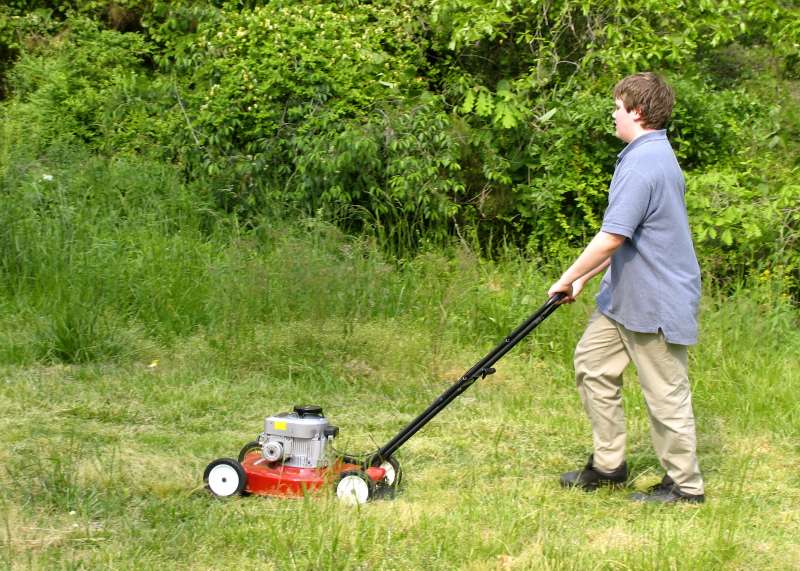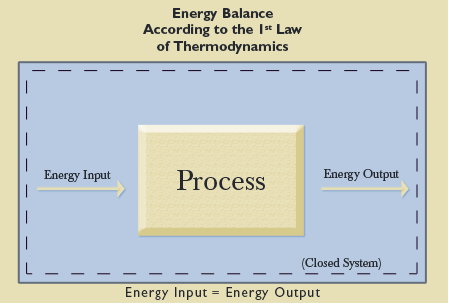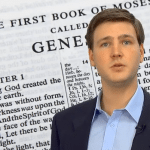By Rachel Hamburg
No matter what Sheldon Cooper may say, everything did not all start with a big bang. At its heart, the Big Bang theory breaks fundamental rules of physics, and I’m truly disturbed that it’s becoming so popular in American culture. With high-rating TV shows like Cosmos and The Big Bang Theory, cosmic evolution is being commercialized like firecrackers for toddlers. That’s why it’s so important for us, as believers in the absolute truth of Scripture, to understand the foundations of our Universe and how theories like the Big Bang violate them.
The First Law of Thermodynamics…
When I began taking physics classes in college, one word kept popping up again and again: conservation–conservation of mass and energy, conservation of momentum, conservation of electric charge, and the list goes on. Put simply, conservation means that scientists will measure the same amount of energy, momentum, etc. before and after an experiment. The energy, momentum, etc. may have changed from one form to another, but there’s no more or no less of it. In other words, the experiment didn’t create or destroy anything. Scientists would say that the energy or momentum was “conserved”–because nothing was added and nothing was taken away. Everything in the beginning equaled everything in the end.
For example, let’s say we stick a cheeseburger on the grill and let it sit there until it burns to a crisp. We may not see anything resembling a cheeseburger, yet all of its mass and energy–everything that made up the cheeseburger–is still there. It may now exist as heat, gas, and burnt crispy crumbs, but every single one of those “cheeseburger atoms” exists somewhere.
It’s from this idea of conservation that scientists defined the principle of conservation of energy, or the fact that energy is a quantity that can’t be created or destroyed. This becomes extremely significant in thermodynamics, or the study of how heat, work, and energy operate with each other. The First Law of Thermodynamics includes the principle of conservation of energy, but more importantly, generalizes it to include heat, work, and other forms of energy. You can see the mathematical equation below.
ΔU = Q – W
So now, let’s delve into the details of the First Law. Things may get a little hairy, but don’t be afraid of the math. Although the equation may look unfamiliar, its power lies in its simplicity. The triangle is the Greek letter delta, and it means “a change from the beginning of the experiment to its end.” The U means “internal energy,” or the total energy inside any body. So, mathematically, ΔU translates as “a change in internal energy.” Now, for the second part of the equation: Q represents heat, while W represents work. So think, “A change in internal energy equals heat minus work.” This is hard to understand at face value, but it means that for every change in internal energy, there’s an equal change in heat and work.
Think of it this way, after just having lunch, you mow your front lawn. A thermodynamic process is going on inside your body. As you mow, you lunch is being digested and giving off heat. At the same time, your body is also performing work by walking, pushing, and pulling. The heat from your lunch is adding energy to your body, and the work you’re doing is taking away energy from your body. If the energy added from your lunch is greater than the energy taken away by work, then your body should still have some energy left after you’ve finished mowing. In mathematical language, your body experienced an increase in internal energy.
(Please note that although the amount of energy inside the body may change, the total energy in the body AND its surroundings remains the same. For example, you can sit an inflatable mattress in the pool. If it has a hole in it, water will flow into the mattress, and the amount of water inside the chair will increase. However, the total amount of water in the mattress and in the pool does not change. There’s just more in the mattress and less in the pool.)
…And The Big Bang
Congratulations! You made it through the hard part. Hopefully, all that mathematical mumbo-jumbo didn’t discourage you, but even if it did, the most important part the First Law of Thermodynamics is this: A self-perpetuating machine cannot exist. Whenever a body performs work, it’s got to have an energy source. We can’t build a machine that runs without some kind of fuel or energy. Put simply, a car just isn’t going to run without putting gas in the tank. Never. Ever.
Yet, when it comes to the Big Bang, atheistic scientists seem to ignore this premise. They assume that this energetic, working system we call the Universe just popped itself into existence–from absolutely nothing! This theory is given the scientific name of spontaneous creation. To be fair, they get this theory from something called virtual particles. Virtual particles are particles even smaller than atoms that spontaneously pop in and out of existence–but only lasting for a very, very, very, very, very small time. Unbelievably shorter than a second. Atheistic scientists are investigating this “fluctuation,” as they call it, to support the Big Bang. However, virtual particles are special cases and, more to the point, a self perpetuating machine cannot exist. Our self-sustaining Universe can’t appear out of nowhere without anything “fueling” its existence. Holding to the Big Bang means breaking the First Law of Thermodynamics, no matter how you cut it.
And That’s A Wrap
So, now you truly know about the First Law of Thermodynamics. It defines our Universe and remains one of the most foundational scientific principles. Without it, physics would be a lot harder than it already is! Thankfully, our Creator composed the laws of physics to work together and as beautifully as any piece of music, so that no one has any excuse to deny Him.
To conclude, you might be wondering that if energy can’t be created or destroyed, then why do cars break down and humans eventually die. If we continue to add energy to the body, why doesn’t it keep working? Well, hopefully we can discuss this next time. It includes the Second Law of Thermodynamics, its various violations, and how the Big Bang fails to fit the formula again. Until then, blessings!









Very Good, Rachel
It is absurd how many secular scientists try to extrapolate that because very very small particles often pop out of nowhere as the result of a quantum fluctuation of sorts, that entire universes therefore can and will pop out of nowhere. The fact remains, however, that there would had to have been something to fluctuate in the first place and simply put, nothingness can’t fluctuate. There are more problems with the Big Bang fable than you can shake a stick at. It goes to show the absurdity one must resort to in ones attempt to avoid God.
Always, in All Things, Let God Be Glorified.
Exactly, Gloria. Not to mention the fact that these fluctuations occur very quickly; so even if the Universe “popped into existence,” it would have to almost immediately “pop back into nonexistence.” The whole Big Bang theory is, as you said, absurd. Honestly, it reminds me of the time when Elijah was having the showdown with the priests of Baal on Mt. Carmel. They were leaping and crying and cutting themselves–doing all these crazy things to get their god to answer them. Then, our Creator comes in, incinerating the water-soaked offering and showing everyone who really sits on the throne. One day, these Big Bang scientists will experience a similar thing.
Sorry, but I would appreciate it if you wouldn’t call me “Gloria.” You could call me Giad, or maybe even Glorius (hehe). Perhaps you could even call me “Dante.”
Thanks
It might be for Lawrence Krauss a break through with his quantum fluctuation – now you see it, now you don’t- but where does the law came from, that this is possible? A law self made? They are cosmic clowns.
Whoops! Sorry about that Dante. Didn’t recognize you.
And, Hans Geiger, you’ve made an interesting point. Information can’t “self-make,” so it had to come from somewhere. I believe some people call this conservation of information. There’s a variety of articles out there about that, black hole information, etc. I’m hoping to touch on this in my next article. Hopefully!
Excellent point, Rachel. Sadly, Pope Francis on October 28 went on record as stating that the Catholic Church sees no contradiction between the “big bang” theory of origins and the teachings of the Catholic Church. The Catholic Church has been defending erroneous scientific theories since Pope Urban VIII forced Galileo to recant in 1633. Now much of main-stream Protestantism is falling into the same error. For a more detailed explanation you can read my blog article at: http://fairhavensmedia.com/pope-francis-repeats-churchs-error-concerning-galileo/